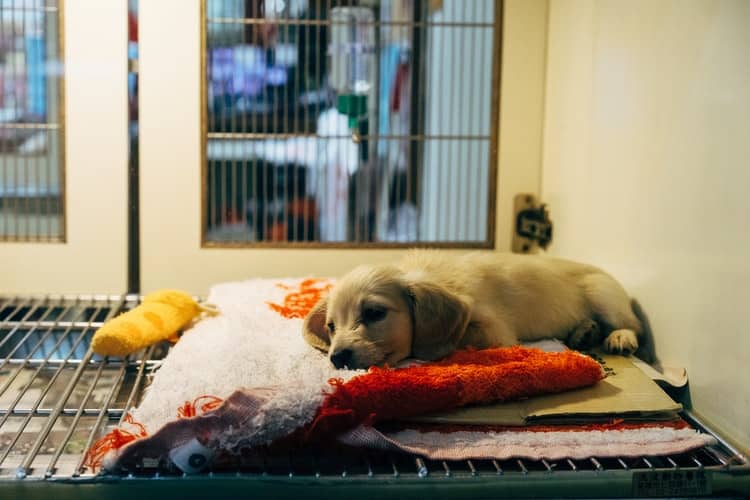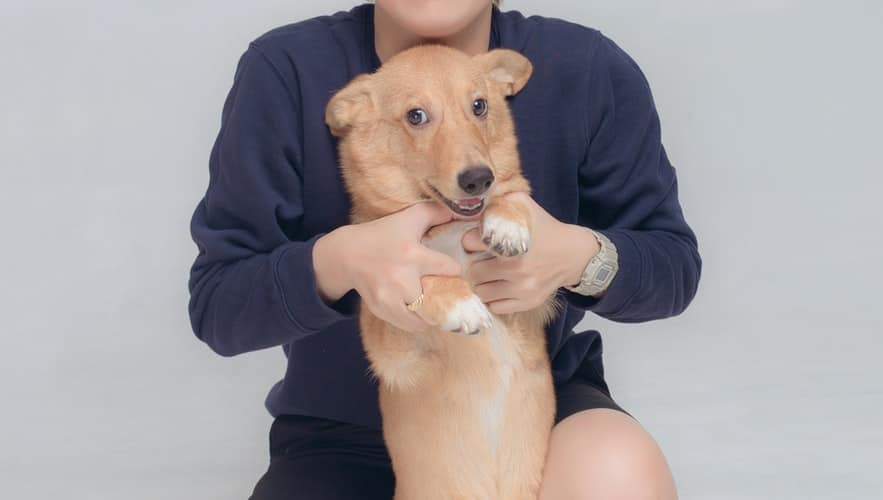A guest article from John Green about the benefits of dog physical therapy.
After surgery, dogs may need physical rehabilitation therapy to help speed up the process of getting back to normal function, and speed up relief from discomfort. Rehabilitation programs can also help obese pets, those recovering from injuries, and elderly dogs suffering from age-related conditions.
Dog Physical Therapy
Nowadays, it is common to find physical therapists in veterinary clinics, offering dog physical therapy. They are specialists in designing and implementing physical therapy programs for your dog’s particular physical condition. The principal aims of a dog physical therapy program include:
- restoring normal movement to the affected limb
- preventing loss of muscle mass caused by lack of movement
- and helping rebuild the muscle mass as quickly as possible.
It’s worth taking a moment to think about the potential importance of physical therapy for your dog, and the circumstances that might require the expertise of a specialist canine physical therapist.

Dog Physical Therapy after surgery
Rehabilitation therapy in veterinary medicine is like physical therapy for humans. However, there are significant differences when we compare a dog’s physical structure, skeleton and musculature to a human; and then add in the extreme stresses and strains to the bones, ligaments, joints, and muscles when the dog runs, jumps and plays. For this reason, a vet needs to work closely with an experienced canine physical rehabilitation specialist to help your dog get back to normal activities.
Starting a dog physical therapy recovery program following surgery to the hip joint and femoral head (an FHO surgery ) is important since it will reduce unwanted scar tissue and loss of joint mobility. Starting the therapy as soon as possible after surgery will promote growth and recovery of the supporting muscles of the hip joint, resulting in faster healing and better mobility and strength of the joint.

Dog physical therapy should start within hours of completion of the surgery, with cold packs being applied to the surgical incision site for 10 to 15 minutes. This should be repeated every three to four hours, for the first three days. Cooling the surgical site has been shown to reduce inflammation, swelling and pain.
After 2 to 3 days, the incision site can be very lightly massaged. This must be done very carefully, to avoid disrupting the healing process of the skin tissues. A week after the surgery, encourage the dog to stand, and make short walks to help maintain muscle movement and joint mobility.
Benefits of Dog Physical Therapy
Recuperation under the guidance of a canine rehabilitation therapist will help your dog recover faster from surgery, restore agility, and reduce pain. Actually, when you see dogs undergoing physical therapy, you’ll seldom see them showing pain because they are enjoying the activities in the program.
Aside from shortening the recovery time after surgery, physical therapy can also help to;
- manage tissue injuries or strains
- treat conditions that are part of the ageing process. Arthritis and spinal problems make up the majority of dog patients who are struggling with age-related conditions.
In addition to aiding recovery after surgery and managing soft tissue injuries, dog physical therapy can help to delay the development of some other ailments, and keep your dog active for longer than would otherwise be the case.

Combining pain management, exercise, and medication can improve a dog’s quality of life and may add many days, weeks and months of free movement.
Here are the other conditions that can benefit from animal rehabilitation;
- Recovery from an amputation
- Hip and elbow dysplasia
- Paralysis
- Neurological system disorders like degenerative myelopathy
- Nerve disorders like vestibular disease and fibrocartilaginous embolism (FCE)
- Obesity
The Post-Surgery Rehabilitation Techniques
Every dog has unique needs depending on their age, size, and medical condition. A therapy program is always based on these factors, to determine which muscle groups should be reinforced or extended. A professional physical therapist can carry out the following forms of therapy for your dog;
1. Massage
A 5 to10 minute massage on the affected leg will reduce adhesions, spur endorphin release, cut swelling, and relieve anxiety and stress. Other legs and areas should be massaged as well, since other parts of the body will have been overworked from the inactivity of the injured leg.
2. Passive Range of Motion (PROM) Exercises
Your dog’s joints are manually moved from side to side mimicking the movement under normal conditions. This promotes and maintains mobility of the joints.
3. Heat and Warmth Compresses
Heat and warmth compresses help physical therapy and work together with PROM. Warm compresses get the treated muscles ready for exercise by opening up the blood supply to the area; On the other hand, cold compresses reduce inflammation, swelling and pain after the exercise is complete.
4. Underwater Treadmill
A water treadmill is a very effective way to encourage your dog to exercise, without injuring the joints. The amount of water in the swim tank controls the level of intensity. If the tank is fairly full, the dog is almost swimming, and so the muscles and joints can move without bearing much weight.
As you go from session to session and your dog recovers, the water level in the tank is gradually reduced day by day, and the speed of the exercise routine is increased. Stretching the time of each session will help to develop your dog’s strength, too.
5. Obstacle Course
Obstacle courses will be helpful for dogs suffering from neurological injuries and impediments by improving their balance, agility, and paw set. These courses are made up of balance bars, hills, steps, bars, and ramps. Most dogs really enjoy this therapy!
6. Cold Therapy Laser
Cold laser therapy is a recent treatment that is becoming more popular. It helps to reduce swelling, stimulates blood circulation, relieves pain, and promotes healing.
Here is a review of research into the benefits of cold laser therapy at PubMed.

We hope this guest article about dog physical therapy contributed by John Green has been interesting and helpful.
Here is the author’s bio: John Green has profound experience in the veterinary field with years of experience. Now he handles content at Pet Health Hospital. In fact, John pays close attention to sharing vital information about pets to most pet parents across the United States. Certainly, John loves and cherishes animals, and owns two dogs Marty and Lou.


